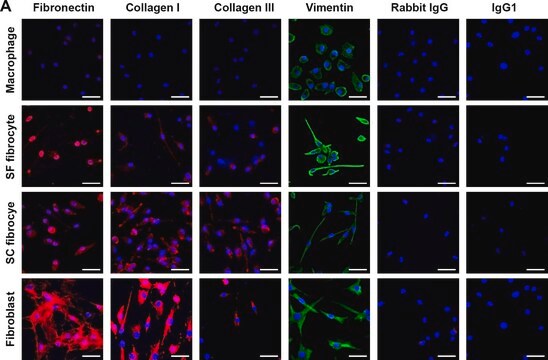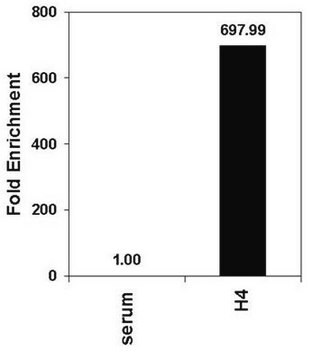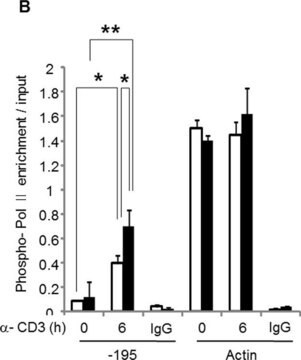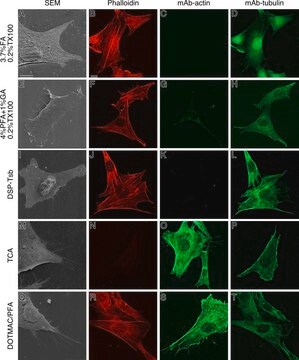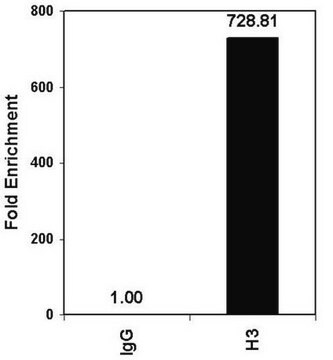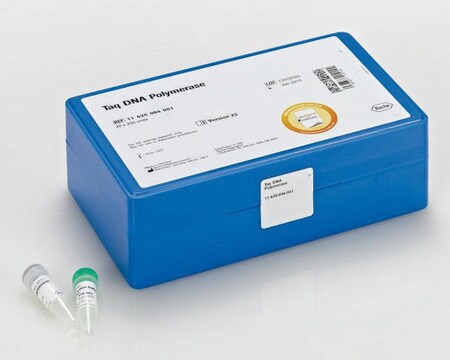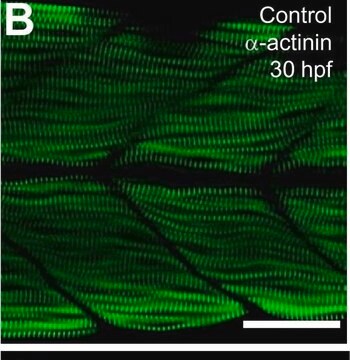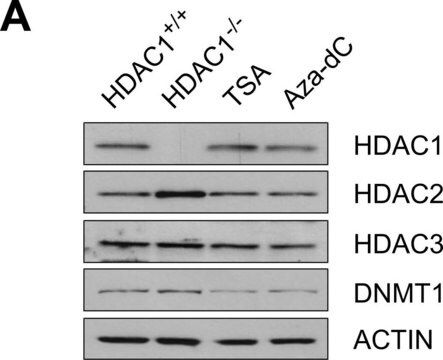17-620
ChIPAb+ RNA Pol II - przeciwciało i zestaw primerów zweryfikowane pod kątem ChIP
from mouse
Synonim(y):
Chip przeciwciała i zestaw starterów, Polimeraza RNA II ChIP, Ukierunkowana przez DNA podjednostka RPB1 polimerazy RNA II, polimeraza RNA II
About This Item
Polecane produkty
pochodzenie biologiczne
mouse
Poziom jakości
klon
monoclonal
reaktywność gatunkowa
rat, Saccharomyces cerevisiae, mouse, human
producent / nazwa handlowa
ChIPAb+
Upstate®
metody
ChIP: suitable
immunofluorescence: suitable
immunoprecipitation (IP): suitable
izotyp
IgG1
numer dostępu NCBI
numer dostępu UniProt
Warunki transportu
dry ice
Opis ogólny
The ChIPAb+ RNA Pol II set includes the RNA Pol II antibody, the negative control antibody (mouse IgG), and qPCR primers flanking the human GAPDH promoter, yielding a 166 bp product. The RNA Pol II and negative control antibodies are supplied in a scalable "per ChIP" reaction size and can be used to functionally validate the precipitation of RNA Pol II associated chromatin.
Specyficzność
Immunogen
Zastosowanie
Epigenetics & Nuclear Function
Chromatin Biology
3T3 nuclear extract was resolved by electrophoresis, transferred to nitrocellulose and probed with anti-RNA polymerase II (0.1 μg/mL). Proteins were visualized using a goat anti-mouse secondary antibody conjugated to HRP and a chemiluminescence detection system (Please see figures).
Opakowanie
Jakość
Opis wartości docelowych
Postać fizyczna
Normal Mouse IgG. One vial containing 25 ug of mouse IgG in 25 μL volume. Store at -20°C.
Control Primers p21. One vial containing 75 μL of 5 μM of each primer specific for a region of the human GAPDH promoter. Store at -20°C.
FOR: TAC TAG CGG TTT TAC GGG CG
REV: TCG AAC AGG AGG AGC AGA GAG
CGA
Przechowywanie i stabilność
Komentarz do analizy
Included negative control antibody mouse IgG and control primers specific for human GAPDH.
Informacje prawne
Oświadczenie o zrzeczeniu się odpowiedzialności
Kod klasy składowania
10 - Combustible liquids
Certyfikaty analizy (CoA)
Poszukaj Certyfikaty analizy (CoA), wpisując numer partii/serii produktów. Numery serii i partii można znaleźć na etykiecie produktu po słowach „seria” lub „partia”.
Masz już ten produkt?
Dokumenty związane z niedawno zakupionymi produktami zostały zamieszczone w Bibliotece dokumentów.
Nasz zespół naukowców ma doświadczenie we wszystkich obszarach badań, w tym w naukach przyrodniczych, materiałoznawstwie, syntezie chemicznej, chromatografii, analityce i wielu innych dziedzinach.
Skontaktuj się z zespołem ds. pomocy technicznej